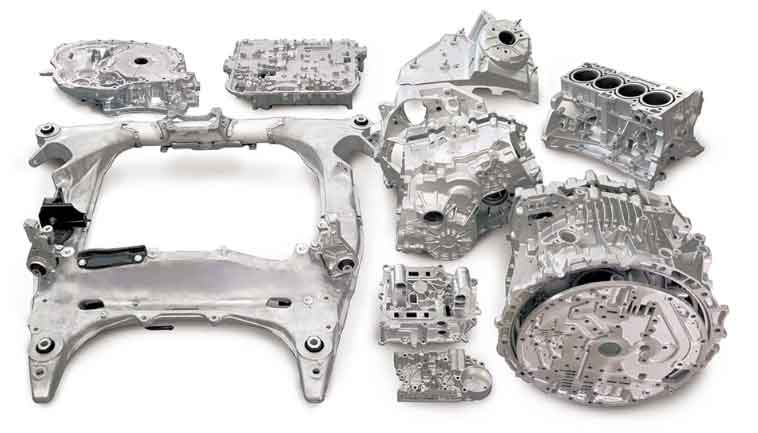
Die casting is a highly efficient manufacturing process, but it does come with certain challenges, particularly when it comes to large-scale production. However, with careful planning and advanced techniques, these challenges can be overcome. Here are some common challenges in large-scale die casting manufacturing and strategies for overcoming them:
- Tooling and Equipment Capacity: Large-scale die casting requires substantial tooling and equipment capacity to meet the production volume demands. This includes larger and more robust dies, high-pressure die casting machines, and efficient melting and holding furnaces. Investing in appropriate tooling and equipment, including multi-cavity dies and high-capacity machines, ensures that the manufacturing process can handle the desired production volume.
- Cooling and Solidification: Cooling and solidification play a crucial role in die casting, as they directly impact cycle times and part quality. In large-scale production, it’s important to optimize cooling channels within the die to achieve uniform cooling and minimize cycle times. Advanced cooling techniques, such as conformal cooling, can be employed to enhance cooling efficiency and reduce the risk of defects like porosity.
- Metal Flow and Fill Time: In large-scale die casting, ensuring proper metal flow and fill time is crucial to maintain consistent part quality. It’s important to design gating and runner systems that allow for efficient metal flow and minimize turbulence. Simulation software can be utilized to optimize gate and runner designs, predict metal flow behavior, and identify potential issues before production.
- Thermal Management: Thermal management becomes more critical in large-scale die casting due to increased heat transfer and the risk of thermal distortion. Effective temperature control of the dies, melting furnaces, and holding furnaces is necessary to maintain consistent part quality and prevent issues like warpage or cracking. Advanced thermal management techniques, such as water-cooled dies and precise temperature control systems, can be employed to overcome these challenges.
- Process Monitoring and Quality Control: Maintaining consistent quality in large-scale die casting requires robust process monitoring and quality control measures. Real-time monitoring of process parameters, such as temperature, pressure, and cycle times, ensures that the process is operating within optimal parameters. Advanced inspection techniques, such as X-ray and CT scanning, can be employed to identify potential defects and ensure the quality of large-scale castings.
- Supply Chain Management: Large-scale die casting involves managing a complex supply chain to ensure a continuous flow of raw materials, tooling components, and other necessary inputs. Effective supply chain management, including timely sourcing of materials and parts, maintenance of tooling inventory, and coordination with suppliers, is essential to avoid disruptions in production.
- Post-Casting Operations: Large-scale die casting often involves post-casting operations like trimming, machining, and finishing. Managing these operations efficiently is crucial to maintain production schedules and meet quality requirements. Automation and robotics can be implemented to streamline post-casting processes and improve efficiency.
By addressing these challenges through advanced techniques, careful planning, and effective process optimization, large-scale die casting can be successfully implemented, ensuring consistent quality, meeting production demands, and optimizing efficiency in manufacturing. Collaborating with experienced die casting experts and leveraging their expertise can also help overcome these challenges and achieve success in large-scale die casting operations.
